A cool avatar is not just your digital representative, as seen with our VIVERSE Realistic Avatar maker, but also the foundation of virtual idols, seamlessly blending digital artistry with real-world performance. These characters may be presented in 2D or 3D forms and often possess their own personality traits, lives, and background stories. Like human performers, they sing, dance, and even endorse products, captivating audiences worldwide. The technology behind virtual idols has evolved significantly: voice synthesis enables them to speak and sing, motion capture brings their movements to life, and advanced stage technologies like holographic projection allow them to "perform" live on stage. These innovations have continually pushed the boundaries of the entertainment industry, creating a unique fan experience where the virtual and real worlds intersect.
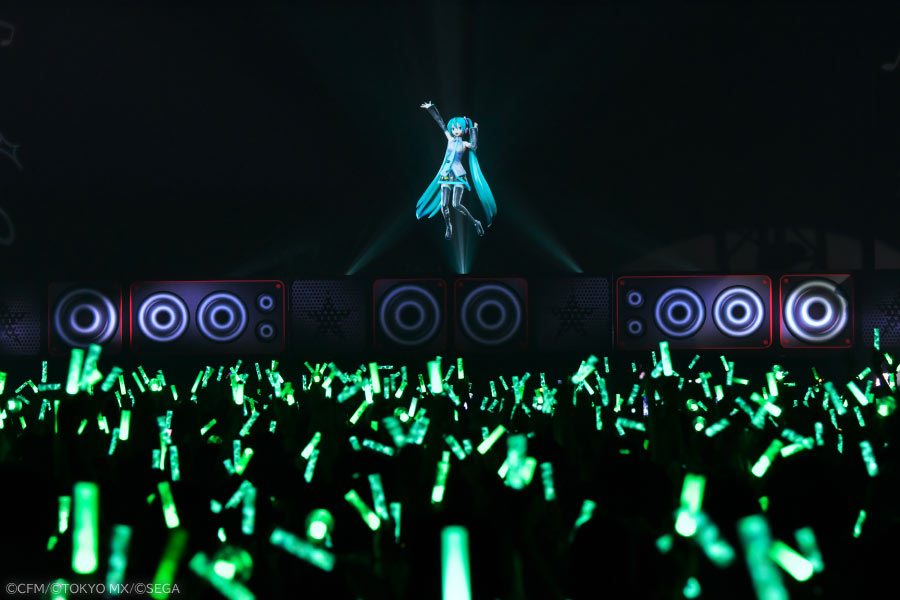 Hatsune Miku at the "Magical Mirai 2023" concert (Source: Crypton Future Media)
Hatsune Miku at the "Magical Mirai 2023" concert (Source: Crypton Future Media)
1990s: The Earliest Virtual Idols
When discussing virtual idols, many think of Hatsune Miku. However, as early as the early 1990s, Japan's entertainment industry had already begun extensive exploration and investment in this area. In 1995, the well-known talent agency Horipro invested heavily in creating a virtual idol, Kyoko Date. For those unfamiliar with that era, this was just after the economic bubble and during the time when Namie Amuro created the "Amuro phenomenon" and became a sensation.
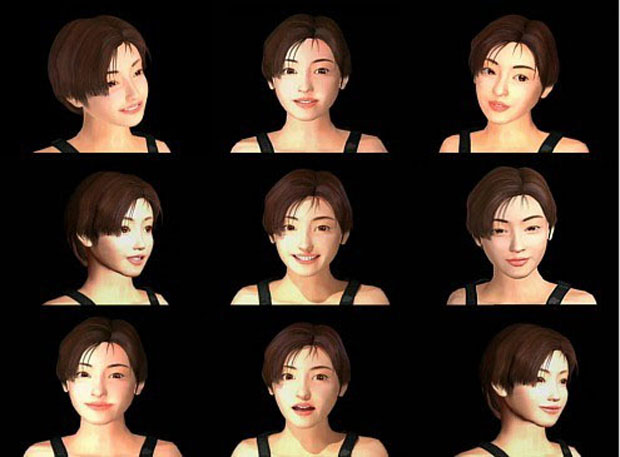
Could Kyoko Date be original virtual idol? (Source: Horipro)
Despite the technology still being in its adolescent stages at the time, Kyoko Date was designed to be as close to a real human as possible, complete with a detailed backstory and personality, and even a narrative of being discovered by a talent scout. In 1996, she released her debut single "Love Communication," featuring her walking the streets of New York and Tokyo, recording in studios, and showcasing dance moves in the music video. Although these movements might seem stiff by today's standards, they were certainly a stunning breakthrough at the time.
However, Kyoko Date's popularity could not compete with Shiori Fujisaki from KONAMI's dating simulation game "Tokimeki Memorial," who also became a virtual idol and released her successful debut single "Oshiete Mr. Sky" shortly after "Love Communication."
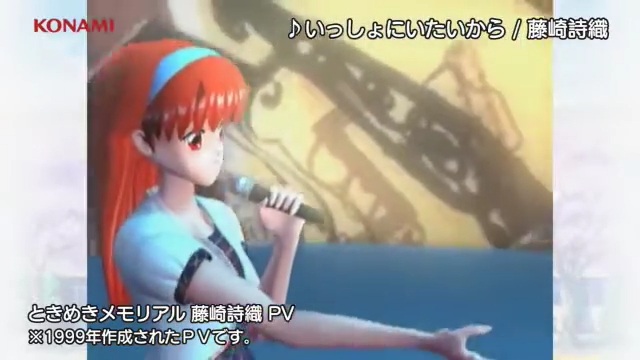
Shiori Fujisaki, the first love of many otaku. (Source: KONAMI)
2000s: The Birth of Hatsune Miku
Interestingly, 2007 marked the birth of Hatsune Miku. A Japanese company named Crypton Future Media released a voice synthesis software called "Hatsune Miku," based on Yamaha's VOCALOID 2 engine. VOCALOID technology allows users to create songs by simply inputting lyrics and melody, and Hatsune Miku was a voice bank in this system, with voice samples provided by voice actress Saki Fujita and character design by illustrator KEI in a two-dimensional anime style.
 Surely everyone recognizes the voice of Hatsune Miku. (Source: Crypton Future Media)
Surely everyone recognizes the voice of Hatsune Miku. (Source: Crypton Future Media)
Initially, Hatsune Miku was simply software, far from being a virtual idol. However, the story of Hatsune Miku took an unexpected turn. The software, embracing the philosophy of "creation for all," inspired many creators and fostered a virtuous cycle of inspiration and sharing. This voice from the "future" sowed the seeds for the path of subsequent virtual idols.
Initially, music enthusiasts began using Hatsune Miku V2 to create songs and uploaded their works to platforms like Nico Nico, gradually cultivating a large fan base. It's worth mentioning that Ayase, the composer for YOASOBI, is a VOCALOID producer.
In 2010, when Hatsune Miku appeared at a concert in a pioneering 2.5D holographic form, the entire music industry was stunned. Thousands of fans waved glow sticks, cheering for this virtual idol shaped by their collective efforts.
In 2011, the explosive popularity of the song "Senbonzakura" marked a turning point. People were amazed that this charming song was performed by a "virtual singer." Subsequently, more works performed by Hatsune Miku broke through to mainstream recognition.
To allow fans not in Japan to also experience her charm, since 2014, "MIKU EXPO" has been touring various regions around the world. This series of events includes not only concerts but also various collaborative exhibitions, extending Hatsune Miku's influence internationally and gradually turning her into a cross-cultural icon.
The success of Hatsune Miku is no accident. Her design philosophy—allowing everyone to participate in music creation—goes hand-in-hand with the user-generated content (UGC) trend in the internet era. Fans are no longer just passive consumers but active contributors. They create songs and illustrations, produce videos, and even design outfits for Hatsune Miku. This unprecedented level of engagement has fostered a deep emotional connection between fans and Hatsune Miku.
In August 2024, Crypton announced the upcoming release of the new "Hatsune Miku V6 AI." Regardless of how technology evolves, Hatsune Miku will continue to accompany countless fans worldwide, creating endless music.
The Emergence of Virtual Band Gorillaz
However, virtual idols are not exclusively a Japanese phenomenon. In 1998, the British music scene saw the birth of Gorillaz. Created by Damon Albarn, lead singer of the well-known British band Blur, and famous comic book artist and illustrator Jamie Hewlett, they introduced a form of virtual idol vastly different from those in Japan.
The creation of Gorillaz stemmed from a reflection on and innovation within the British rock music scene. As the Britpop trend began to wane in the late 1990s, musicians started to explore new paths. Albarn and Hewlett decided to create a completely fictional visual band to challenge traditional band images and performance styles.
The original members of Gorillaz consisted of four virtual characters: lead vocalist 2-D, bassist Murdoc, drummer Russel, and guitarist Noodle. Each character had a detailed backstory and distinct personality, presented through music videos, interviews, and even comics, forming a vast and coherent virtual worldview. This tight integration of music, visual art, and narrative storytelling provided fans with a novel musical experience.
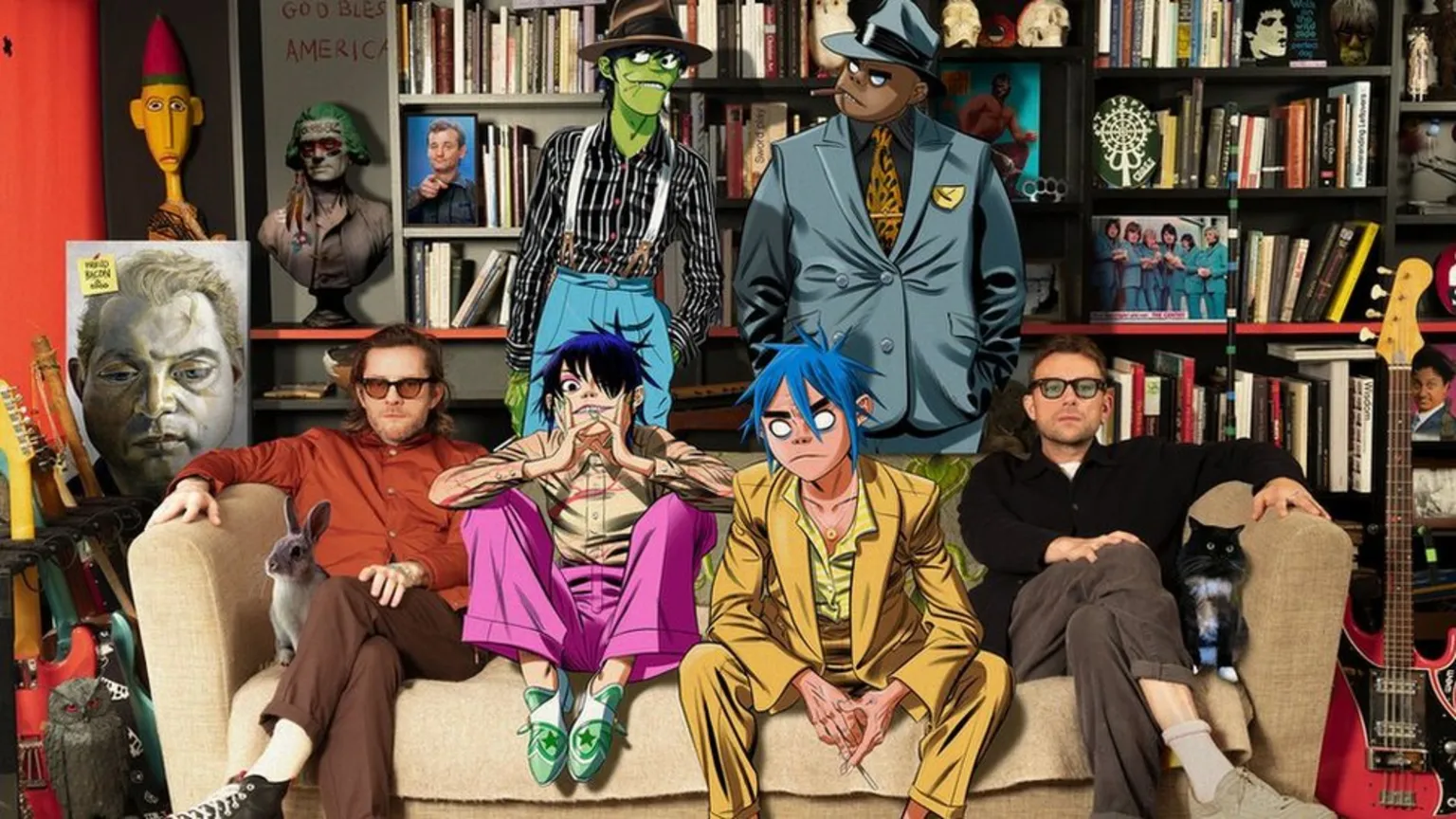 If you're around my age, you probably saw them often on MTV. (Source: Gorillaz)
If you're around my age, you probably saw them often on MTV. (Source: Gorillaz)
In terms of musical style, Gorillaz was innovative and revolutionary. Their music blended rock, hip-hop, electronic, and other elements. Although the music was still created and sung by Albarn and other real performers, this diverse musical style complemented their virtual identities, as the virtual character settings made cross-genre collaborations and style integrations more natural.
The success of Gorillaz not only proved the potential of virtual idols in Western markets but also sparked a global craze. Their album sales were astonishing: the 2005 release "Demon Days" sold over 8 million copies worldwide and received double platinum certification in the United States. In 2006, they won the Grammy Award for Best Pop Collaboration with Vocals for "Feel Good Inc." and even performed on stage with Madonna at the award ceremony.
As of 2024, Gorillaz continues to thrive in the pop music scene with its unique style, remaining active on various social media platforms as the era evolves. Their performances continuously exceed audience expectations, exploring the boundaries between technology and music.
2010s: The Explosion of Virtual Idols, the Rise of K/DA, and Kpop Joins the Battle
With the rise of Hatsune Miku, the virtual idol industry flourished. Not only did Crypton introduce more characters, but other companies also launched virtual idols based on Vocaloid.
In 2012, China introduced its first Vocaloid virtual idol, Luo Tianyi, as the debut voice bank of the China project. In the same year, the Japanese agency 1st PLACE launched IA, using singer Lia as the voice source and collaborating with various brands to develop voice banks. These virtual idols expanded the Vocaloid ecosystem, gradually incorporating more languages and promoting interesting integrations of music, animation, and other media forms.
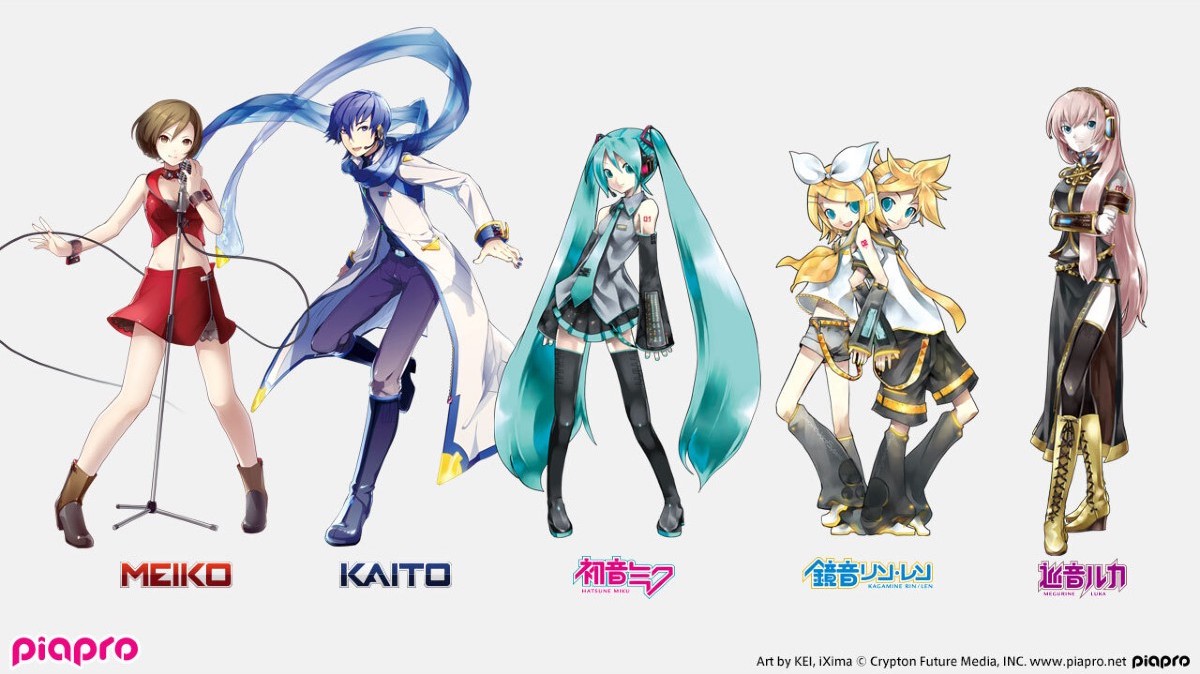
In the late 2010s, South Korea introduced a different angle to the concept of virtual idols. Riot Games' game "League of Legends" launched the virtual girl group K/DA, featuring popular game characters Ahri, Akali, Evelynn, and Kai’Sa, with voice acting by well-known Kpop girl group (G)I-DLE members Jeon So-yeon and Cho Mi-yeon.
 K/DA made a strong debut in 2018. (Source: Riot Games)
K/DA made a strong debut in 2018. (Source: Riot Games)
K/DA's debut single "POP/STARS" premiered at the 2018 World Championship, featuring an augmented reality (AR) performance. Interestingly, in an interview, K/DA's production company Fortiche stated that they did not use any motion capture technology for this music video but instead opted for frame-by-frame hand-drawn animation, showcasing their solid foundation in animation production (notably, Fortiche is also famous for the well-known series "Arcane"). Currently, this music video has reached 600 million views on YouTube.
2020s: Will the Future of Virtual Idols Belong to AI and the Spatial Internet?
By 2020, the Kpop industry, known for playing with concepts and worldviews, also joined the virtual idol battle. The four-member girl group aespa, launched by the major company SM Entertainment, masterfully played with sci-fi elements like the fusion of fiction and reality. The members of aespa include Karina, Giselle, Winter and Ningning. From the outset, aespa was endowed with a grand worldview and character setting, considered part of the SM Culture Universe.
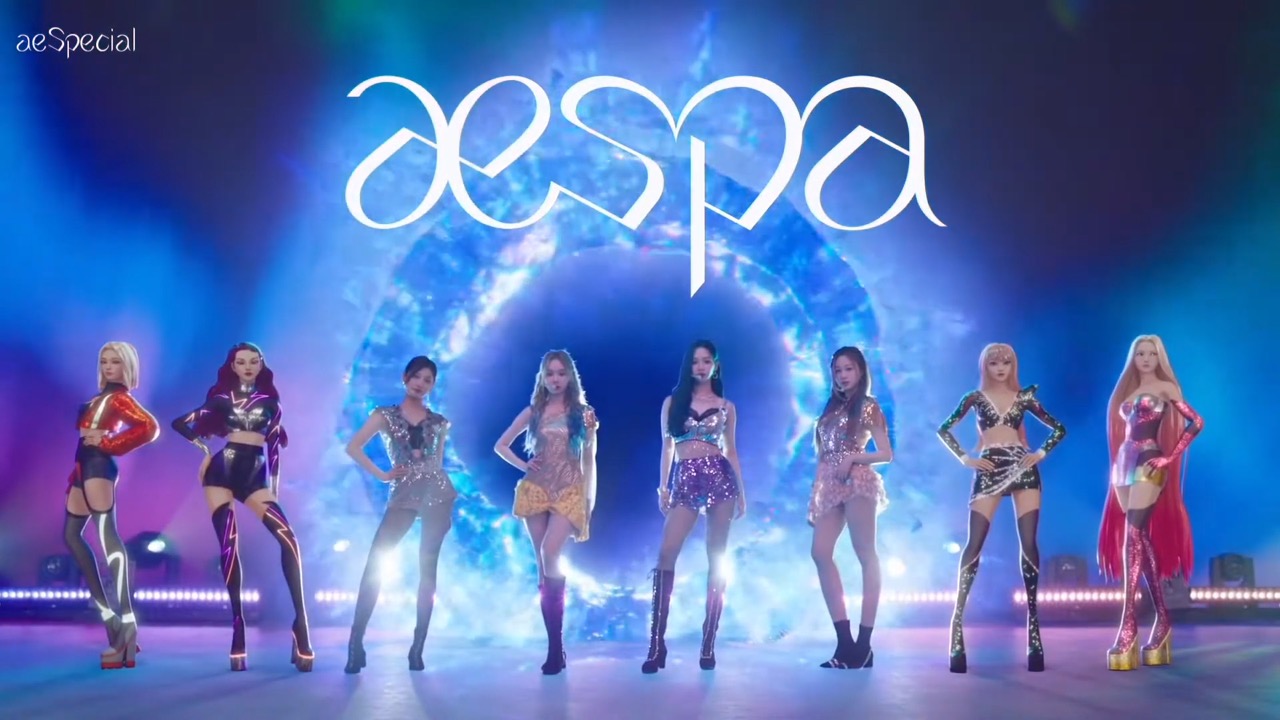 Turns out aespa is not just a four-member girl group. (Source: SM)
Turns out aespa is not just a four-member girl group. (Source: SM)
The group name aespa itself tells a story; the prefix ae, written as the symbol æ, stands for 'Avatar X Experience,' reflecting the group's founding purpose—'to meet another self-avatar and experience a new world.'
Each of the four members has a virtual avatar (ae), which is not created out of thin air but derived from data continuously uploaded by each member in their daily lives, acting as their digital twins. Thus, the virtual avatars look somewhat similar to the members themselves but are slightly different. The avatars' names are the members' names prefixed with ae, such as ae-KARINA. If you include the virtual members, aespa could be considered to have eight members.
As AI applications become more practical, the Kpop industry has introduced several AI virtual idol groups, using deepfake technology to create highly realistic faces. These AI idols can sing and dance and have even appeared on TV music shows. Although their movements are not as flexible as a human being, they are almost indistinguishable from real people at a glance.
In 2021, the first AI virtual girl group, ETERNITY (also written as IITERNITI), debuted with 11 members. These members were selected through voting on 101 virtual faces on social media. ETERNITY was created by the South Korean tech company Pulse9 using their proprietary Deep Real AI technology, claimed to be more powerful than typical deepfake technology. However, the debut music video faced criticism for issues like drifting faces that did not align properly.
 Unnatural faces in the MV. (Source: IITERNITI)
Unnatural faces in the MV. (Source: IITERNITI)
Ironically, ETERNITY's debut single was titled "I’m Real," and the most popular member, Dain, released a solo single called "No Filter." These song titles reflect AI's efforts to prove its 'authenticity.' In early 2024, ETERNITY launched a Kickstarter campaign to fund future albums and activities. However, the campaign was abruptly canceled before its deadline, having raised only $586 of its $5,000 goal.
Following ETERNITY, the Kpop industry did not give up on experimenting. In 2023, Kakao ENTERTAINMENT launched a four-member girl group—MAVE:. With substantial resources, MAVE: quickly became a media sensation, not only releasing singles and appearing on music shows but also featuring in a webtoon themed around the group.
However, compared to real-life idols who can interact with fans in real time, AI idols are still relatively more restrictive and rely heavily on the operation of the production team. Currently, MAVE: is preparing to return in 2024, but it remains to be seen whether fans will continue to support them when the hype dies down.
 The highly realistic MAVE:. (Source: MAVE:)
The highly realistic MAVE:. (Source: MAVE:)
Virtual idols have evolved over the past thirty years, transitioning from early experimentation to becoming a well-established industry that generates significant value. As technology advances, the applications of virtual avatars extend far beyond virtual idols. From VTubers accompanying fans in live gaming streams to virtual influencers endorsing products on Instagram, virtual avatars continue to evolve in various platforms and fields. Thirty years ago, who could have imagined that people would be so fascinated by non-human idols? How can we not be curious about the future? Observing these 'virtual avatars,' one can't help but wonder where they will take VIVERSE and the entertainment industry.
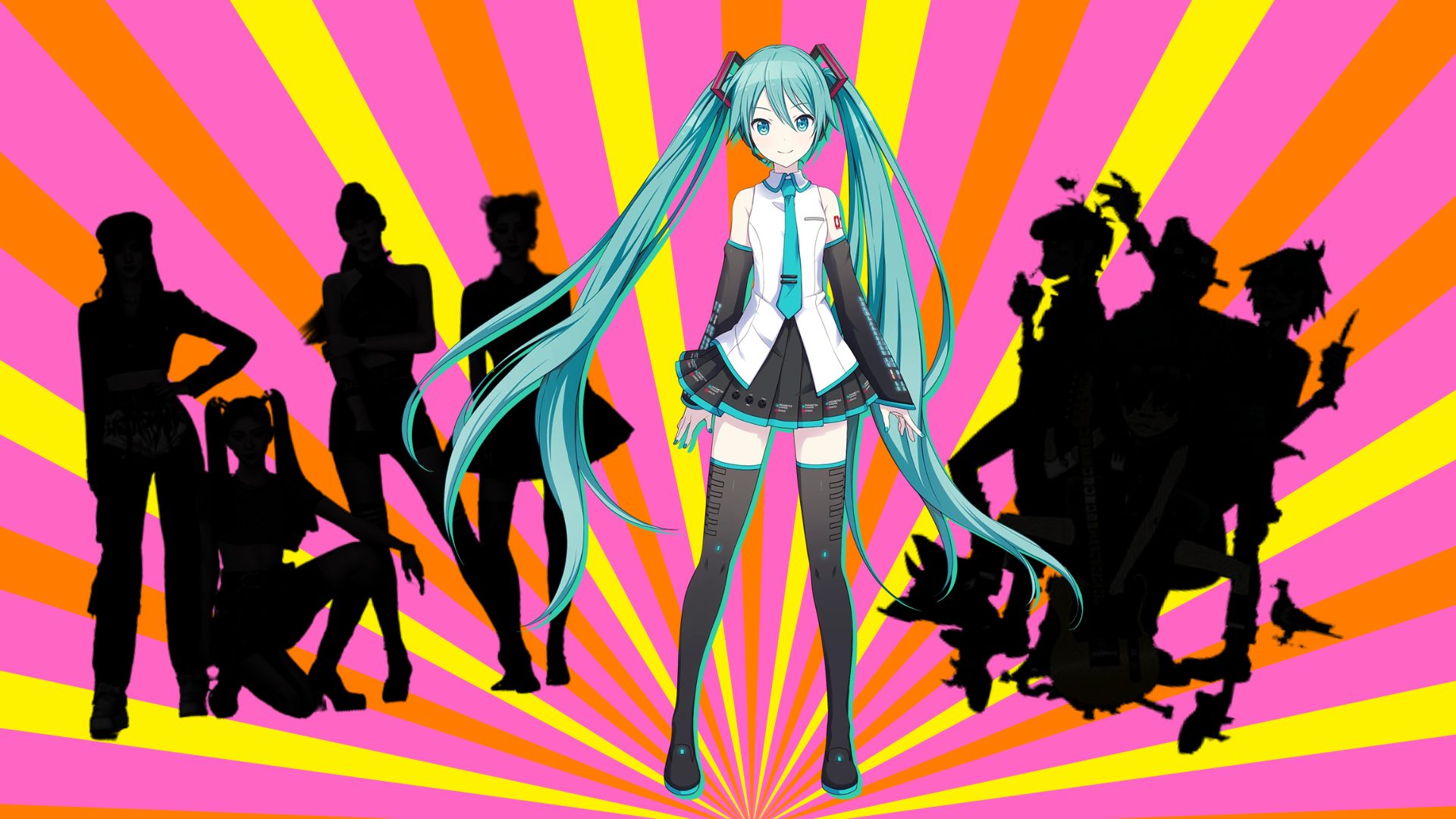
 Hatsune Miku at the "Magical Mirai 2023" concert (Source: Crypton Future Media)
Hatsune Miku at the "Magical Mirai 2023" concert (Source: Crypton Future Media)

 Surely everyone recognizes the voice of Hatsune Miku. (Source: Crypton Future Media)
Surely everyone recognizes the voice of Hatsune Miku. (Source: Crypton Future Media) If you're around my age, you probably saw them often on MTV. (Source: Gorillaz)
If you're around my age, you probably saw them often on MTV. (Source: Gorillaz)
 K/DA made a strong debut in 2018. (Source: Riot Games)
K/DA made a strong debut in 2018. (Source: Riot Games) Turns out aespa is not just a four-member girl group. (Source: SM)
Turns out aespa is not just a four-member girl group. (Source: SM) Unnatural faces in the MV. (Source: IITERNITI)
Unnatural faces in the MV. (Source: IITERNITI) The highly realistic MAVE:. (Source: MAVE:)
The highly realistic MAVE:. (Source: MAVE:)
